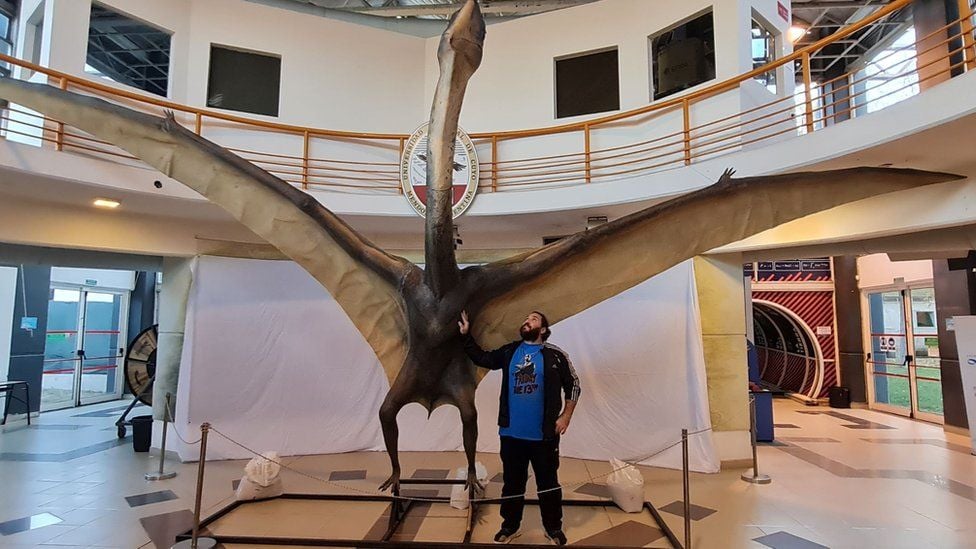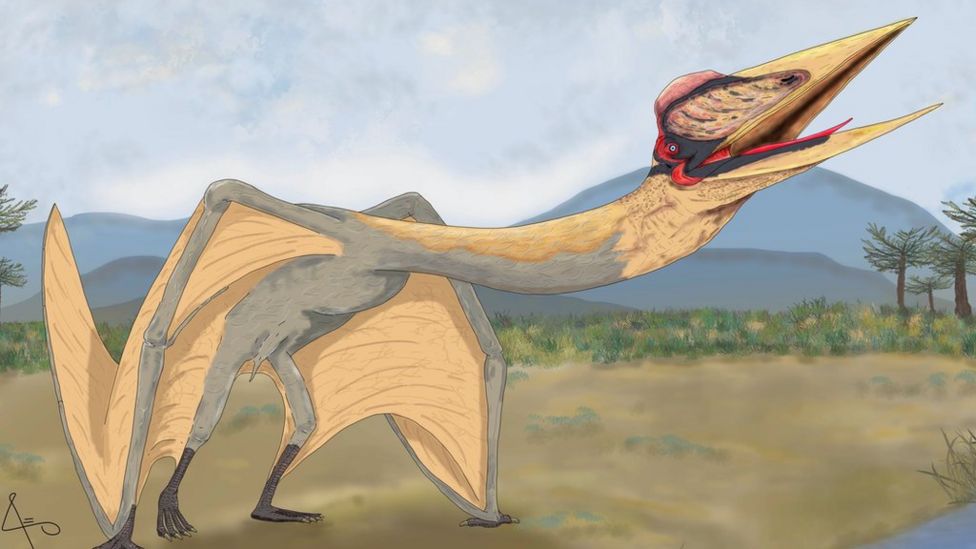
Fossilized remains from a giant flying reptile, dubbed by scientists The Dragon of Death, have recently been discovered in Argentina.
The newly discovered species was the size of a bus and hunted prey from Earth’s skies around 86 million years ago.
When fully extended, its wing span measured a massive nine meters (30 ft). The sheer size of the predator paints a “terrifying vision,” the scientist behind the discovery told the BBC.
“This species had a height similar to that of a giraffe,” project leader Leonardo Ortiz said, with a wingspan that “defies the limits of our biological understanding.”
Its remains had been preserved in rocks in the Andes mountains for 86 million years, which means the flying creature lived alongside dinosaurs.
Prof Ortiz was one of the paleontologists who originally discovered the reptile’s fossils during an excavation in Argentina back in 2012.

Thanatosdrakon: Combines the Greek words for death and dragon
He chose the species’ name—Thanatosdrakon amaru—because it combined the Greek words for death and dragon. “It seemed appropriate to name it that way,” Prof Ortiz said in an earlier interview. “It’s the dragon of death.”
The species name, “amaru,” translates as “flying serpent” from the Indigenous Quechuan language and refers to Amaru, a two-headed Incan deity.
Researchers confirmed that the Dragon of Death belongs to are azhdarchids, a family of pterosaurs that lived during the end of the Cretaceous period (approximately 146 million to 66 million years ago).
“Azhdarchids were known for their very large skulls—sometimes larger than their bodies—as well as their hyper-elongated necks and short, robust bodies,” Ortiz told Live Science in an email.
The team also classified the pterosaur fossil as the biggest discovered in South America and one of the largest in the world.
Though scientists have put pterosaurs in the same category as birds because of their ability to fly, they’re difficult to classify because they were cold-blooded predators. They had no rivals in the sky, so pterosaurs are believed to have ruled over all of the continents and evolved into various shapes and sizes.
The fossils were found during excavations for a civil construction project about 500 miles (800 kilometers) outside Mendoza’s capital city (also named Mendoza).
Ortiz and his team were supervising the dig when they discovered fossil fragments within floodplain deposits.
Mendoza, where Aconcagua, the highest mountain in the Americas, is also located, is well known among paleontologists for other important dinosaur discoveries, including that of the giant sauropod Notocolossus, one of the largest dinosaurs in the world, in 2016.
See all the latest news from Greece and the world at Greekreporter.com. Contact our newsroom to report an update or send your story, photos and videos. Follow GR on Google News and subscribe here to our daily email!



